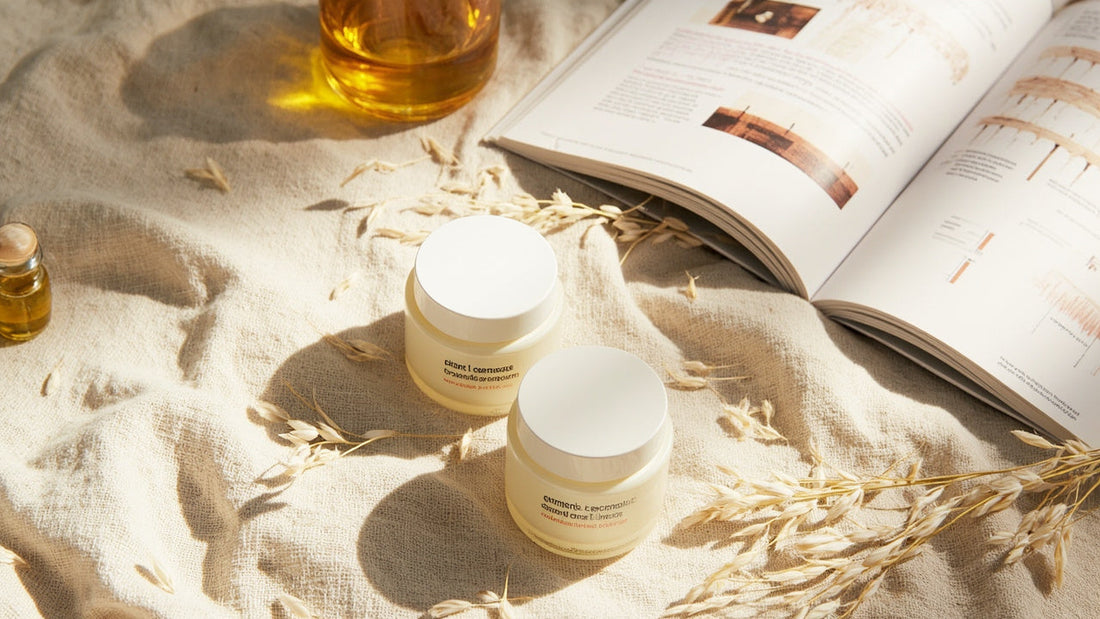
Plant Ceramides vs. Synthetic: Which Really Supports the Barrier?
Share
In the world of skin barrier care, ceramides are the MVPs—crucial lipids that keep your skin firm, hydrated, and resilient. But not all ceramides are created equal. As clean beauty evolves, many are now asking: Should I be using plant-based ceramides or synthetic ones? And does the source really make a difference?
Let’s break down the science behind both, and help you choose the right type for your skin and lifestyle.
What Are Ceramides, and Why Do They Matter?
Ceramides are waxy lipid molecules that make up over 50% of your skin’s outer layer. Think of them as the “mortar” between your skin cells—the structure that prevents water loss, keeps irritants out, and holds your barrier together.
When your skin lacks ceramides, it can become dry, sensitive, or inflamed. That’s why replenishing them through skincare is essential, especially in colder seasons or when using actives like retinol or acids.
Plant-Derived Ceramides: Nature’s Lipid Mimics
Plant ceramides (also called phytoceramides) are derived from ingredients like rice bran, wheat germ, or sweet potatoes. These naturally occurring lipids are similar in structure to those found in the skin, and are often paired with other botanical extracts for added anti-inflammatory and antioxidant benefits.
The PhytoRepair Barrier Cream uses ceramides sourced from rice bran and blended with niacinamide to support both hydration and skin tone balance. It's ideal for those looking to support their skin barrier without synthetic additives.
Synthetic Ceramides: Lab-Pure and Proven
Synthetic ceramides are created in laboratories to replicate the exact molecular structure of your skin’s own ceramides—like Ceramide NP or Ceramide EOP. Because they’re lab-designed, they’re stable, highly effective, and used in many dermatologist-recommended formulations.
If you're dealing with chronic dryness, eczema, or a seriously compromised barrier, synthetic ceramides might deliver faster results due to their bio-identical match and higher concentration.
The Dermashield Ceramide Complex Cream features five types of synthetic ceramides and cholesterol to mimic the skin’s natural lipid matrix and accelerate recovery.
Which One Should You Choose?
It depends on your skin’s needs and your beauty values.
Choose plant ceramides if:
-
You follow a vegan or natural skincare routine
-
Your skin is mildly dry, reactive, or you prefer a gentle, daily hydrator
-
You want added botanical benefits like antioxidants or anti-inflammatory effects
Choose synthetic ceramides if:
-
You have moderate to severe barrier damage
-
You need fast recovery after retinol, exfoliants, or dermatological treatments
-
You want clinically tested, targeted lipid replenishment
Can They Work Together?
Absolutely. Many clean formulas now combine both types for a broader spectrum of barrier support. For example, the Barrier Biome Night Balm includes plant ceramides, synthetic ceramides, and cholesterol for a triple-lipid approach that mimics the skin’s natural barrier and supports long-term resilience.
Barrier Care Isn’t Binary—It’s Balanced
The bottom line? Your skin doesn’t care about labels—it cares about lipids. Whether they come from plants or a lab, the best ceramides are the ones that restore your barrier without irritation or heaviness.
So whether you’re a green beauty minimalist or a science-forward skincare lover, there’s a ceramide formula that fits your rhythm—and your skin’s unique needs.
Support your skin. Protect your glow. Choose the ceramides that align with you ✨
